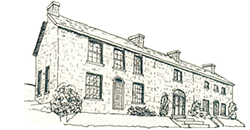Horaceville, the residence of the Hon. Hamnett Pinhey, was named for Pinhey’s eldest son. In keeping with British gentry practice, young Horace was intended to be the heir to the property.
The house was built in four stages, from north to south.
The original house, built in 1820-1821, was “a nice tasty cottage with viranda [sic]”. It was a two-storey log building, covered with clapboard. To the rear was a square stone kitchen with hip roof.
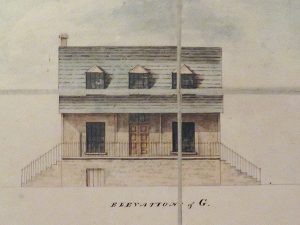
From 1822-25 a stone parlour wing was added. Upstairs were three small bedrooms, probably servants’ quarters, opening off a wide hallway-sitting room. The house is pictured at this stage of development in a rare print of a sketch done by Mary Anne Pinhey in the 1830s.

In 1841, Pinhey began to look ahead to the day Horace would marry and take over the farm. He planned a large addition in two stages.
The central hall-kitchen wing was built in 1841-42, with a gracious sweeping staircase leading upstairs to a dining room at the head of the stairs and a bedroom over the front entrance.
The new kitchen wing to the rear was to become Mrs. Pinhey’s kitchen when a daughter-in-law took over the older part of the house.
On August 21, 1847, Horace Pinhey married Kate Greene at neighbouring St. Mary’s Church, and in September work began to enlarge the old stone kitchen to better serve the young couple.
In 1848-49 the final, south wing was added, including a library, pantry, and drawing room on the ground floor. Upstairs, several bedrooms and an interesting second-storey privy, which Pinhey called the “sanctum sanctorum”, Latin for “the holy of holies”, were added.
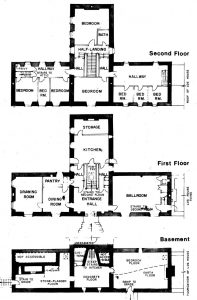
Horace and Kate moved into the older part of the house and took over management of the farm, turning over half the produce each year to his parents. Hamnett retained control of the gardens and moved with wife Mary Anne and daughter Constance into the newer part of the house.
At Hamnett Pinhey’s death in 1857 he willed the new half of the house to daughter Constance. However, she married her cousin John Hamnett Pinhey and moved to town shortly thereafter, deeding her inheritance to Horace. Horace’s son Hamnett Pinhey II assumed ownership of the house upon Horace’s death in 1875.
In the nineteenth century, the Pinhey house had been expanded to accommodate a growing family. After the First World War, it was home to an aging family. Hamnett II died in 1941. His son Horace II and his resident sisters of the fourth generation never married.
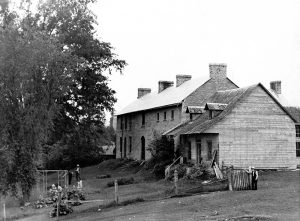
The family rejected proposals to make Horaceville the home of a Hollywood actress or a summer residence for the Governor General. Horaceville remained the Pinhey family farm until the 1970s. In the early 1970s the remains of the log cottage collapsed. The stone kitchen behind was partially dismantled for safety reasons and the ruin was stabilized.
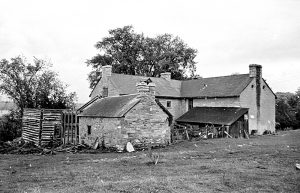
In the end, Miss Ruth Pinhey alone occupied the deteriorating central wing of her ancestors’ great house. She died in 1971.
